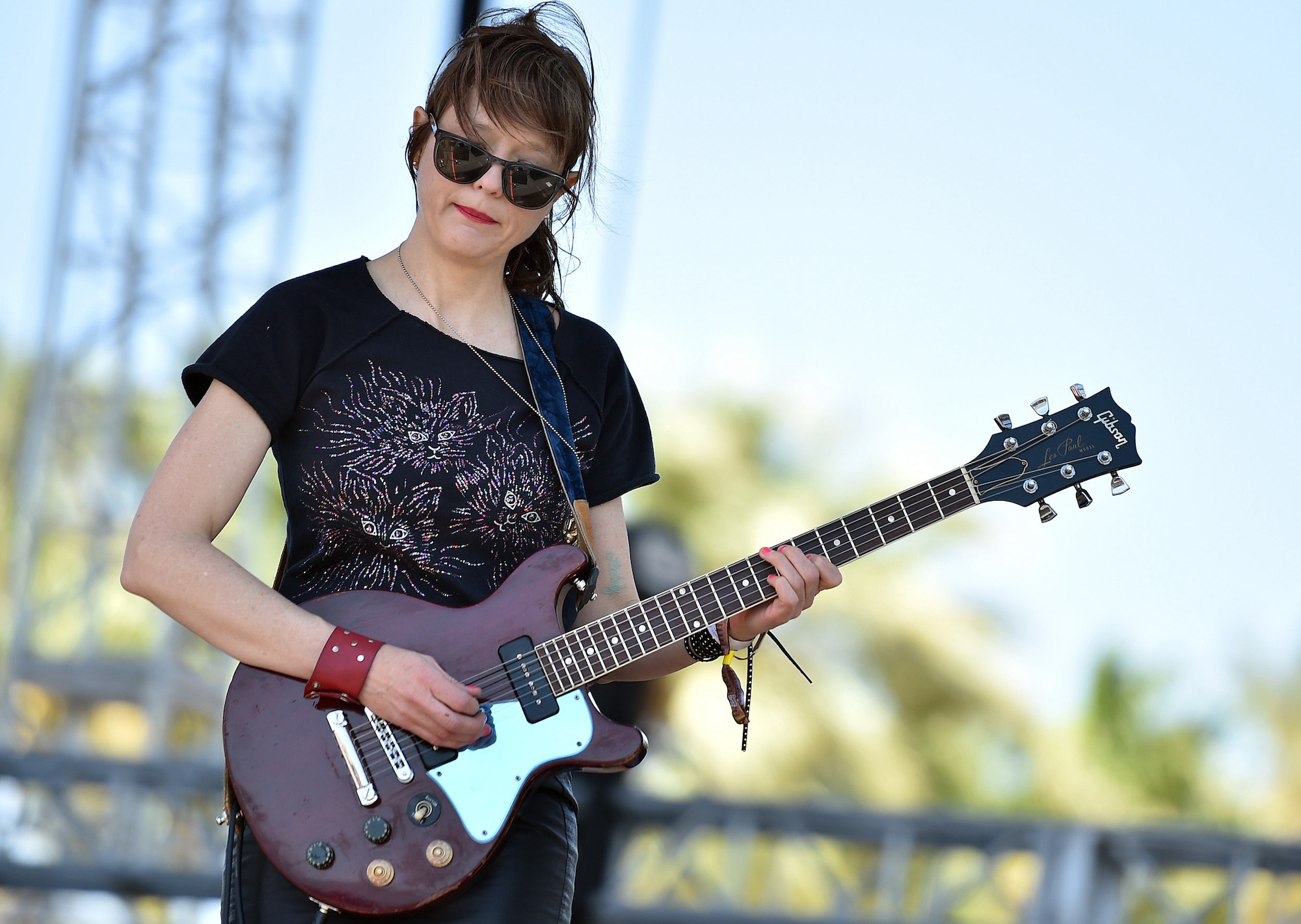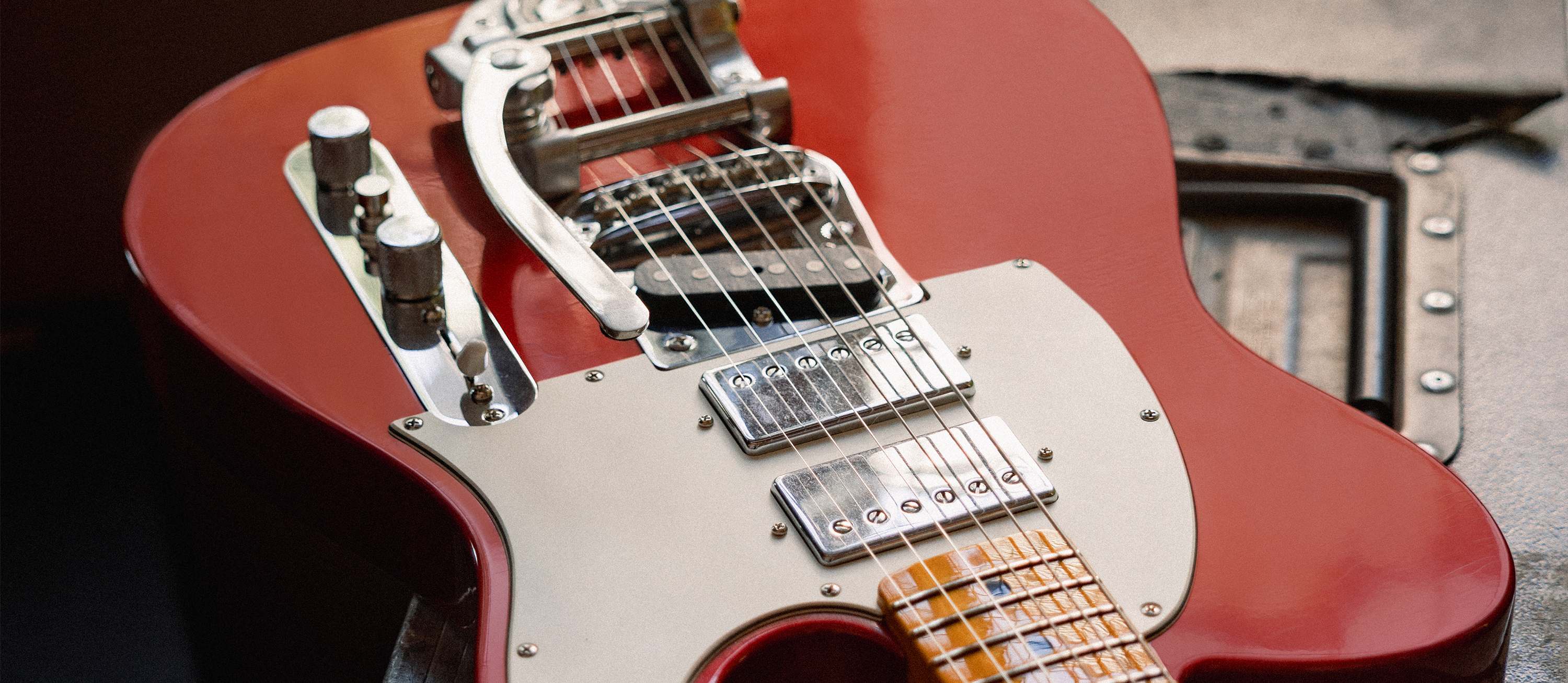“I had a huge pedalboard at one point. You have 15 pedals, and your tone sucks... Joe Walsh and Hendrix, they didn’t use a bunch of pedals”: Schooled in jazz and classical guitar, with a punk spirit, Mary Timony's skilled fretwork is as unique as ever
Back with her first solo album in over a decade and a half, Timony chats with GP about her frustrations with the punk genre, losing (and subsequently regaining) her touch on the guitar, and recording rhythm parts on a near-century old Gibson

Although many genres – metal, jazz and classical, to name a few – embrace the fluidity and erudition of the guitarists who top their respective fields, punk and indie rock have always had an uneasy relationship with formal training and technical mastery.
Isn’t it easier to break the rules if you don’t know them in the first place? Can authenticity, innocence and raw emotion survive in a player who spends too much time in the woodshed? In short, can you be cool and go to school?
For Mary Timony, studying jazz and classical guitar in a specialized high-school program and college provided her with the ability to make artistic decisions with an intent unfettered by limitations. It’s a talent the Washington, D.C., native has exercised since the early ’90s while blazing a fiercely original path as a solo artist and in bands like Autoclave, Helium, Wild Flag, and Ex Hex.
As a result, when Timony embraces indie-rock tropes, like a predilection for Fender Jazzmasters and alternate tunings, it’s by choice, not default. As her many fans will agree, it’s no wonder she was ranked in the top 100 of Rolling Stone’s recent “250 Greatest Guitarists of All Time” list.
Untame the Tiger (Merge Records), Timony’s first solo album in more than a decade and a half, was recorded during a challenging period for the guitarist.
“Both of my parents got sick, and I was caretaking,” she says. “My dad got dementia, my mom got cancer, so I was the primary caregiver for both of them. And a long-term relationship had ended right before that, so suddenly my life just was very different and really stressful.”
Despite what could seem like insurmountable challenges, the full breadth of Timony’s musical, vocal, and disarming lyrical skills are on display on Untame the Tiger. From the expansive, orchestrated guitar workout of album opener No Thirds to the propulsive new wave of Dominoes and the crunchy baroque riffery of Summer, there’s no lack of inspired playing, but never to the detriment of the songs themselves.
“I love guitar,” says Timony, who teaches the instrument as well. “But I’ve always thought of it as my blueprint for what the song is, rather than thinking about what I’m doing on the instrument. Songs and lyrics are way more important to me.”
Let’s start at the beginning. When did you discover the guitar?
“I started viola lessons in third grade, and I played in the quartet at school, but I was a typical kid, just like, 'I don’t like practicing. This is boring.' Then, my brother was really getting into rock music, and my parents gave him a guitar for Christmas, and he started writing songs. Suddenly, I was like, 'Oh, you can write songs with a guitar! Music can be really fun, because you can be creative with it and you can use it to sing and accompany yourself.' But I was still just a super-depressed kid and always sick and stuff.
Once I started being able to play guitar all day, I was like, 'Whoa, life can be kind of exciting and fun!'
“My mom realized I would probably like this public music high school called Duke Ellington School of the Arts, and that was the best experience. As soon as I started going, everything changed.”
Life turned from black and white to color?
“Yeah! Once I started being able to play guitar all day, I was like, 'Whoa, life can be kind of exciting and fun!' We’d just hang out in the room and jam with other kids, and my teacher was this awesome R&B and jazz guy.

“We had a masterclass with Joe Pass, and we went to see Stanley Jordan and meet him. There was a music business seminar with Maurice White, I believe, from Earth, Wind & Fire. And we had an instrumental guitar band that played at the local supermarket and at the post office pavilion. Oh – and Dionne Warwick spoke at our graduation!”
Did you go to college for music?
“I went to Boston University for classical guitar for one year. It was a great place for orchestral instruments, but to be honest, the guitar program was terrible. All the teacher did was talk about Rhode Island history and furniture. I was like, 'What the fuck is this?' Then I had this total meltdown. I was like, 'I am so sick of studying music. This is bullshit. I just want to write and play three-chord songs and be at punk shows'.”
I felt like I had to choose a genre and had a real meltdown about, 'What is my music? What is the music that I’m learning, and how does it relate to this punk stuff?'
Were you a fan of the D.C. punk and hardcore scene during the period when you were studying guitar?
“I don’t think I would’ve done music without being around that. There were kids who were 15 and were going on tour and making their own records. It was super-inspiring, and also it was kind of spiritual and religious, because nobody cared about making money. That said, though I liked some of the D.C. hardcore bands, some of it was way too masculine and not musical enough for me.
“That’s the negative side to punk that I resent: When you’re in a community of people who don’t really learn from history or are making things up, the bar is low for how good you’re supposed to get at your instrument. There’s this amateurism thing, which can sometimes be great, but it’s annoying when it’s not good.”
As someone with formal musical training, did you think it was possible to fit into that scene as a guitarist?
“I feel like people that are under a certain age, maybe 35, have no idea what it was like before the internet, when you had to really search things out and genres were much less fluid than they are now. I felt like I had to choose one and had a real meltdown about, 'What is my music? What is the music that I’m learning, and how does it relate to this punk stuff?' And I just couldn’t figure out how to make it all make sense.
“I felt very compartmentalized. I was going to this high school, and practicing a lot, and that was one personality I had. And then there was the person that went to punk shows, and they didn’t match. And then my real true self is someone who loves Neil Young and Joni Mitchell and Jimi Hendrix.
“It just took me a second in my early 20s to be like, 'Wait, what is my voice? And do I have to join one of these groups, or can I just be myself and combine them?' It definitely took gaining some confidence to figure out what I would make if I were going to make something.”
Where does Richard Thompson figure into the equation of your musical heroes? You used the drummer Dave Mattacks, who played with Fairport Convention and on Richard and Linda Thompson’s Shoot Out the Lights, on several tracks on Untame the Tiger.
“Richard Thompson is absolutely one of my favorites. A friend of mine does a drum podcast and had interviewed Dave Mattacks and was like, 'Dude, you should totally get him on your record.' I was like, 'What the fuck? That’s not possible.' I was almost too scared to do it, but part of getting older, and also part of dealing with my parents’ illness, is that everything went into perspective. I stopped letting all of my hang-ups guide me. So I was able to be like, 'Yeah, okay, let’s call up Dave Mattacks.'
“And it happened, and it was fucking amazing; I would say one of the highlights of my life. We recorded at Studio 606, which is the Foo Fighters’ place in LA.”
But most of the guitars for the record were recorded in your basement?
“Yes. My friend Dennis Kane and I would try every guitar I had until we got the right sound. We didn’t have a time limit. We would do two weeks of tracking, throw it out, start over again. I can’t even tell you how much stuff I threw out.”

What were the main guitars and amps you used?
“The main electric guitars were my 1966 Jazzmaster, which I’ve had since Helium, a Saul Koll Junior Glide, a 1964 Epiphone Sorrento, a 1977 doublecutaway Les Paul Special, and a Mulhauser Designs Bravo with a TV Jones T-Armond in the neck and a Suhr Thornbucker in the bridge.
“The main amps were my silverface Fender Champ, my blackface, mid-’60s Bassman, an Orange Rockerverb, and a Swart STR-Tweed. And then in terms of microphones, we used a Neumann TLM 103 condenser mic and a Shure SM57.”
When you start with distorted guitars, things start to sound really small
The sounds are very pure, and it doesn’t sound like many pedals were involved.
“I don’t like pedals. I’ve gone through a lot of phases with them and definitely had a huge pedalboard at one point. You have 15 pedals on your pedalboard and your tone sucks. I was like, 'Oh, this is too much. Dial it back.' Joe Walsh, who I love, and Hendrix and all these guys, they didn’t use a bunch of pedals. So I just like being very careful about which ones I use. In a way, pedals are their own instrument. It’s like a synthesizer, basically.”
Untame the Tiger isn’t what you’d call an “acoustic record,” but a lot of the rhythm guitar parts on the album are played on acoustic. How did you decide that was the way to go?
“I think I had overdone the distortion a little bit in the past, and I wanted to dial it back and get a cleaner sound. I had a big realization that all my favorite records by bands like the Byrds, the Flying Burrito Brothers, and Fairport Convention had a lot of acoustic guitars on them. I wanted this record to be more real sounding. Also, when you start with distorted guitars, things start to sound really small.”
Was there a specific acoustic that you favored for the rhythm tracks?
“I had gotten my grandmother’s 1931 Gibson L-0 – she even scratched her name in it – from an aunt. It was just sitting in an attic, like, for 60 years, and she shipped it to me in the mail. She doesn’t know anything about guitar, so it was in a box without a case, just rattling around, and it was kind of messed up. But I got it worked on, and it sounds amazing! It’s the main acoustic on the record.”
Why did you choose to use an EBow on Untame the Tiger where you might have used keyboards or strings?
“I’ve done it on other records. I like it because it’s like feedback, but it’s more controlled, and it’s really fun. Another reason is because my right arm was extremely tense for the past seven years, and I’d almost gotten to where I felt I couldn’t play guitar anymore, because when I recorded, everything was ahead of the beat, and it sounded shitty.
“I almost got to the point where I was like, 'I guess I just suck on guitar'. I would try to practice, and not get any better. And then last year, I got the chance to work with a friend of mine who is a really incredible classical player, and he was watching me play and he fucking figured out what I was doing.
“It was so dumb – I just wasn’t resting my arm on the guitar enough! I was so anxious, and worked up, but as soon as I realized what was wrong, started loosening up and went to a chiropractor, my arm started working better and I just redid all the stuff I’d been struggling with. And I got it in just a few takes.”
You recently ranked 95th in Rolling Stone’s 250 Greatest Guitarists list. What was your reaction?
“I was incredibly honored, because that means a lot to me. It was super-amazing. I’m glad to see that the qualities people use to pick who is on there are not just flashiness. So I’m glad it’s changing, but I’m also really, really aware of all of the gender stuff that goes on around a list like that. But also, these lists are baloney. Because my favorite guitar players are, like, below me? Give me a fucking break. Everyone knows Rory Gallagher and Joe Walsh are the best!”
Smart Guitar: Snail Mail’s Lindsey Jordan got more than guitar lessons from Mary Timony

Although only 24, Lindsey Jordan of Snail Mail has already accomplished more than most guitarists will in a lifetime.
Snail Mail’s two albums, 2018’s Lush and 2021’s Valentine, have received universal critical praise, and the guitar skills that she has developed since starting to play at the age of five earned her a spot on Rolling Stone’s recent “250 Greatest Guitarists of All Time” list, alongside Mary Timony. Here, Jordan explains how taking lessons from Timony set her on an upward trajectory.
How did you come to take lessons from Mary?
“I had a friend who was taking lessons with her, and I was like, ‘That’s cool, I would love to do that.’ I’d already been playing guitar for a really long time, but Mary’s a hero of mine. I’ve never been anywhere near a teacher that makes that kind of creative shit. So much open-tuning stuff and innovative stuff.”
What did you work on in the lessons?
“I told her, 'I know my basics and then some, but I feel like I have so much to learn from you.' So, there was different stuff. We were doing the Beatles’ And Your Bird Can Sing guitar-monies at some point. We also worked on See No Evil by Television, and we did a lot of jamming.
“I also was showing her a lot of the stuff I was writing in open tunings. And then, of course, I copied some Mary Timony guitar tunings on our album Lush, ’cause it got to a point where I was getting tired of open D and standard.”
Did she give you any career advice?
“I came to her with every single problem when Snail Mail was coming up, and she’s just super-insightful. I felt really lucky to have her in my corner, because she’s also just the nicest person I’ve ever met. If I can have a lasting career that keeps the integrity the way hers has and keeps the flame of creative passion alive, then I’m doing good.”
- Mary Timony's Untame the Tiger is set for a February 23 release via Merge Records. Pre-order the album here
Get The Pick Newsletter
All the latest guitar news, interviews, lessons, reviews, deals and more, direct to your inbox!
"This 'Bohemian Rhapsody' will be hard to beat in the years to come! I'm awestruck.” Brian May makes a surprise appearance at Coachella to perform Queen's hit with Benson Boone
“We’re Liverpool boys, and they say Liverpool is the capital of Ireland.” Paul McCartney explains how the Beatles introduced harmonized guitar leads to rock and roll with one remarkable song












